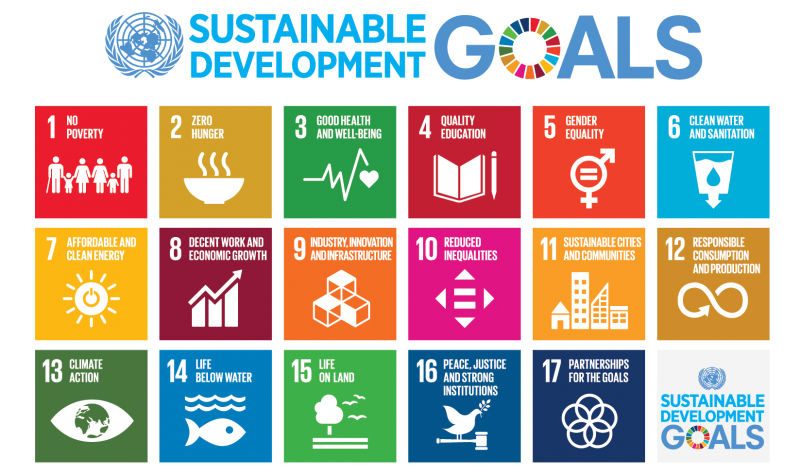SDGs 10 years on – approach with caution
2020 marks the fifth anniversary of the establishment of the United Nations’ special development goals, or SDGs. The UN created 17 SDGs to address the global challenges society and corporates face, such as those related to poverty, inequality, climate change, environmental degradation, peace and justice. The SDGs were designed as a blueprint to achieve a better and more sustainable future for the world. The 17 goals consists of 169 targets in total, with an aim of meeting them by 2030.

Five years on, and in the wake of the pandemic, a recent report written by M&G, titled “A decade to deliver: The SDG reckoning“, has shed light on the progress of the goals. According to the report, the majority of the goals are significantly behind the schedule to meet the 2030 deadline. This finding is similar to the one published by the US non-profit group Social Progress Imperative (SPI), which estimated that meeting SDGs is 62 years behind schedule and that it could be delayed by another decade as a result of COVID-19.
The M&G report has highlighted that SDG4 (Quality education), SDG8 (Decent work and economic growth), SDG1 (No poverty), SDG9 (Reduced inequalities) and SDG12 (Responsible consumption and production) have been particularly negatively impacted by the pandemic. On the positive note, according to the report, the pandemic has provided positive momentum to several goals: specifically, SDG3 (Good health and well-being), SDG 11 (Sustainable cities), SDG 7 (Affordable and clean energy), SDG 9 (Industry innovation and infrastructure), SDG 15 (Life on land) and SDG 17 (Partnerships for the goals) have gained significant attention.
However, M&G has found that three goals in particular have fallen sharply behind the target. Disturbingly, progress on SDG 13 (Climate action) remains well behind schedule with the goal gaining a score of 2 (out of 10 with 5 being on track to achieve the target). SDG 14 (Life below water) is also significantly behind, with a score of 3. With plastic pollution and continuing increases in CO2 levels, the oceans are likely to see a 100-150% rise in acidity by 2100, affecting half of marine life. The third goal with a low score of 2 is SDG 15 (Life on land); although the report noted that “the pandemic has highlighted the connection between the trafficking of animals out of their natural habitats to be bred for human consumption, and the emergence of high-infection communicable diseases, such as COVID-19,” indicating that the pandemic is likely to have some positive impact here.
A number of market participants believe that the crises could spur the public and private sector into action by highlighting the attractiveness of sustainable investing and its potential to lead to better outcomes for the environment and society. This is especially true now with the world recovering from the COVID -19 crisis and global growth needing a boost. The UN has estimated that the delivery of the Goals could add US$12 trillion ($17.1 trillion) to the global economy alongside 380 million new jobs. However, to deliver on the goals, around US$5 trillion-US$7 trillion ($7.1 trillion-$10 trillion) of annual expenditure is required.
And this is where the action has been lagging.
Companies and investment managers have enthusiastically embraced the SDGs in their reports, using them to map their activities and investments to specific goals. This is generally done superficially, usually in the context of existing activities and focusing on positive linkages to headline goals. As the latest report by the World Business Council for Sustainable Development showed, while 84% of member companies referenced specific Goals in their sustainability reports, only 15% of member companies had aligned their business strategy to specific target-level SDG criteria and only 6% used the key performance indicator for measurement purposes.
Another example of the misleading use of the SDGs is an increasing number of funds raising money to invest in listed securities and being promoted to be delivering on the Goals. The reality is that the money raised largely goes into funding existing activities rather than providing additional funding for specific projects that are measurably aligned with the Goals.
This practice of misrepresentation in using SDGs is becoming known as “SDG” washing or “rainbow washing,” in contrast to “greenwashing.” Hence, it is advisable that investors approach any SDG-labelled fund with caution. They should aim to understand exactly how the Goals, including the specific indicators and metrics have been embedded in the managers’ approaches, and look for evidence of assessing and potentially quantifying the expected differences to target outcomes.
In most cases they are likely to find that the Goals are being used mainly as a communication tool rather than a robust framework for providing solutions.










